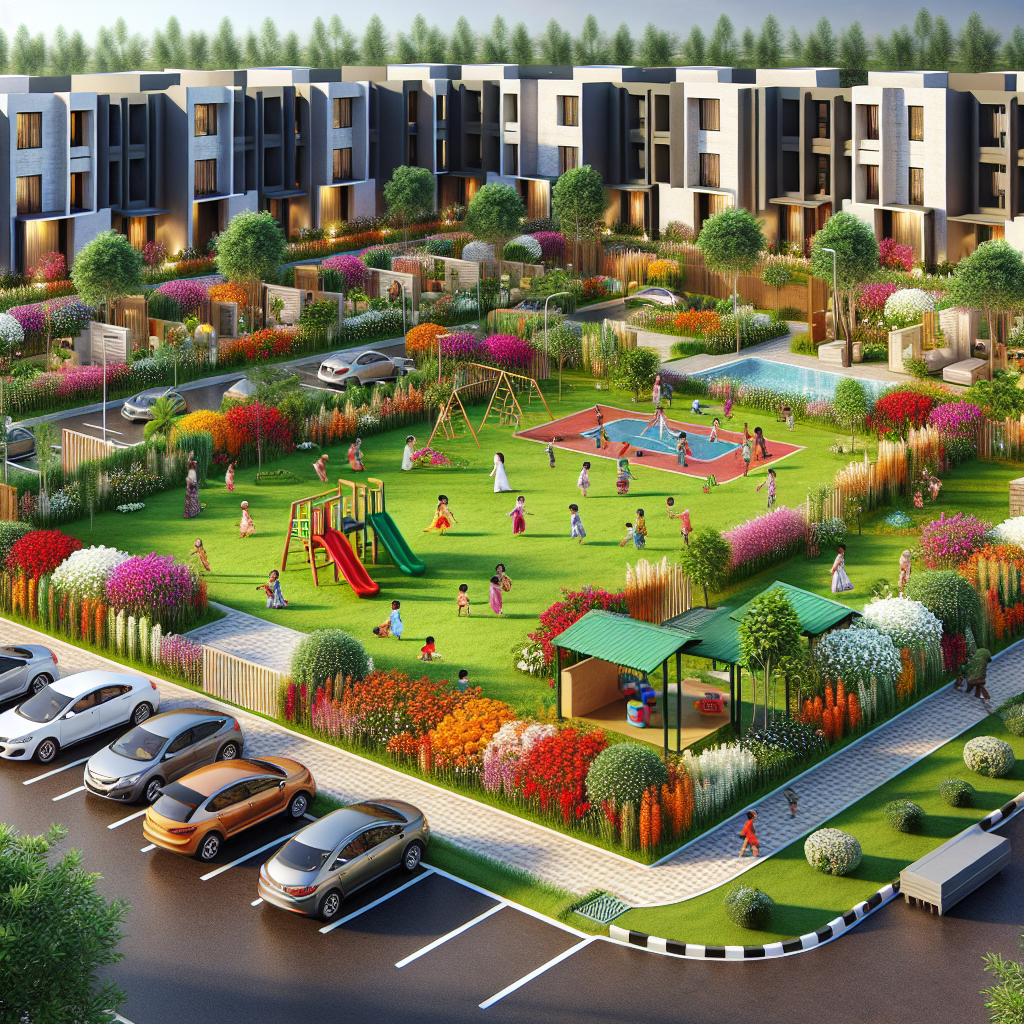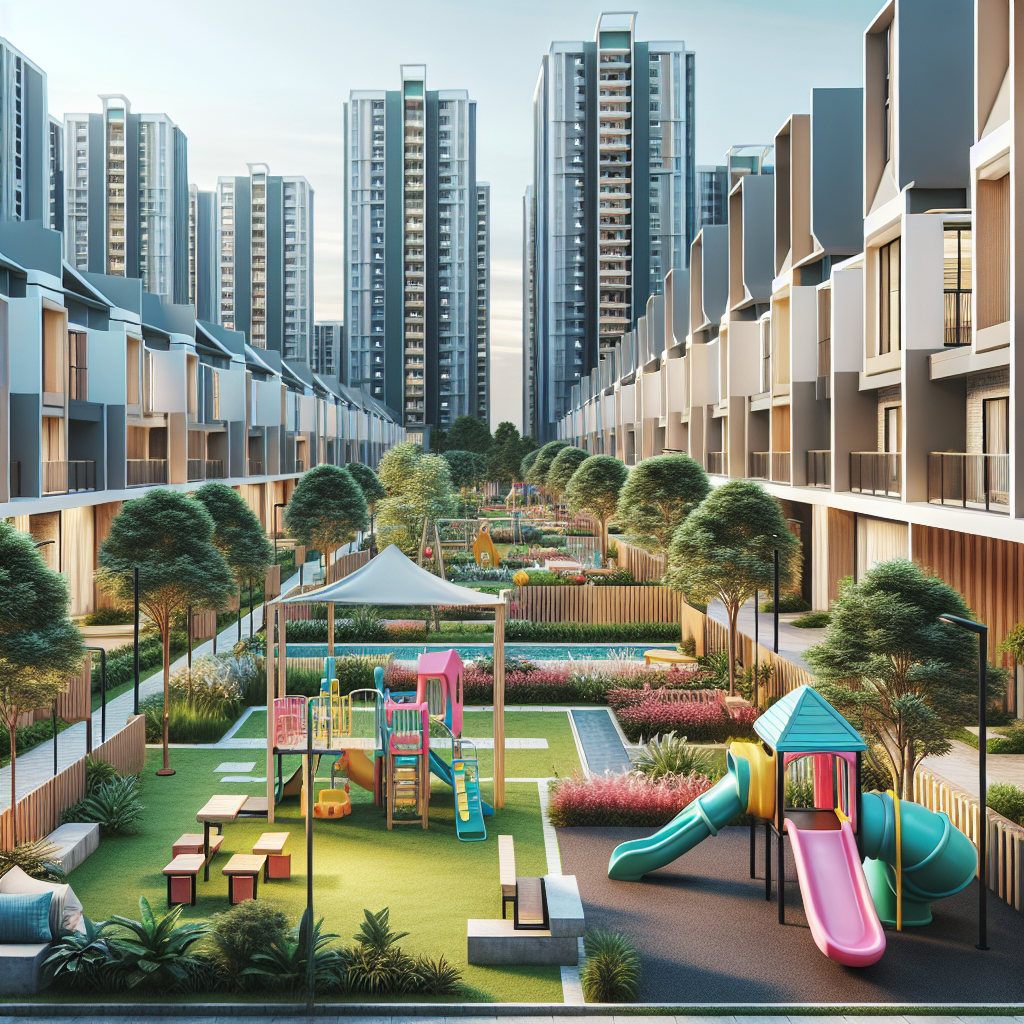
Что такое лот аксессуаров? Всё, что вам нужно знать
Делиться
В сфере недвижимости и развития недвижимости крайне важно понимать различные типы участков. Дополнительный участок , который часто недооценивают или упускают из виду, играет важную роль в повышении полезности и стоимости основных участков. Но что такое дополнительный участок ? Проще говоря, дополнительный участок — это участок земли, который не предназначен для основного использования, а служит для поддержки или дополнения основного участка. На таких участках могут быть парковочные места, сады, зоны отдыха или даже дополнительные складские помещения.
Дополнительные участки часто используются как в жилых, так и в коммерческих зданиях для создания дополнительных удобств и функциональных пространств, которые повышают общее удобство и эстетическую привлекательность объекта. Например, в жилых комплексах дополнительные участки могут быть отведены под общественные сады или игровые площадки, что повышает общее качество жизни жителей. В коммерческих районах эти участки могут быть оборудованы необходимыми парковочными местами или погрузочно-разгрузочными площадками, обеспечивая бесперебойную работу и удобство как для клиентов, так и для сотрудников.
По мере роста спроса на хорошо спланированную и многофункциональную недвижимость значение дополнительных участков становится всё более очевидным. Независимо от того, являетесь ли вы застройщиком, домовладельцем или потенциальным инвестором, понимание концепции дополнительных участков может помочь вам максимально эффективно использовать потенциал и стоимость вашей недвижимости.
Обновите свой стиль с Therjsnews! Откройте для себя последние тренды и обновите свой гардероб уже сегодня. Покупайте модную одежду, которая говорит сама за себя!
Понимание определения партии аксессуаров
Чтобы полностью понять концепцию дополнительного участка, необходимо разобраться в его формальном определении. Дополнительный участок — это участок земли, предназначенный для поддержки или улучшения функциональности основного участка. В отличие от основных участков, которые являются основным объектом застройки и использования, дополнительные участки являются вторичными, но неотъемлемыми компонентами, предназначенными для обеспечения дополнительных преимуществ и повышения общей полезности основного участка.
Вспомогательные лоты могут иметь различную форму и служить различным целям. Вот распространённые примеры:
- Парковки: предоставляют необходимые парковочные места для жителей, сотрудников или клиентов.
- Зоны отдыха: сюда могут входить игровые площадки, спортивные площадки или общественные сады.
- Складские помещения: дополнительное пространство для хранения оборудования, транспортных средств или других предметов, которые не помещаются на основном участке.
- Ландшафтные буферные зоны: зеленые зоны или благоустроенные территории, которые повышают эстетическую привлекательность и обеспечивают экологические преимущества.
Понимание этих определений крайне важно для всех, кто занимается девелопментом, городским планированием или инвестициями в недвижимость. Дополнительные участки регулируются законами и правилами зонирования, которые различаются в зависимости от местности. Эти правила определяют допустимые виды использования, размер и расположение дополнительных участков, гарантируя, что они дополняют основной участок, соответствуя при этом местным стандартам и требованиям.
Глубокое понимание дополнительных участков может помочь заинтересованным сторонам принимать обоснованные решения о развитии и использовании собственности, что в конечном итоге приведет к созданию более функциональной и эстетически приятной среды.
Распространенные варианты использования дополнительных лотов

Дополнительные участки служат множеству целей, каждая из которых призвана расширить функциональность и привлекательность основного участка. Их универсальность делает их бесценным активом в различных условиях, от жилых районов до коммерческих зон. Вот некоторые из наиболее распространённых вариантов использования дополнительных участков :
- Парковки: Вспомогательные парковки часто используются в качестве парковочных мест. Будь то жилые комплексы, офисные здания или торговые предприятия, такие парковки обеспечивают достаточное количество парковочных мест для жильцов, сотрудников и клиентов, тем самым повышая удобство и доступность.
- Зоны отдыха: Придомовые участки могут быть преобразованы в зоны отдыха, такие как парки, игровые или спортивные площадки. Эти пространства предоставляют жителям и гостям возможности для отдыха и физической активности, способствуя повышению качества жизни.
- Общественные сады: В городских условиях приусадебные участки могут использоваться для общественных садов. Эти зелёные зоны укрепляют чувство общности, способствуют устойчивому развитию и предоставляют жителям возможность заниматься садоводством и наслаждаться свежими продуктами.
- Складские и подсобные помещения: Дополнительные участки могут служить местами хранения оборудования, транспортных средств или других предметов, которые не помещаются на основном участке. Это особенно полезно в коммерческих и промышленных помещениях, где часто требуются дополнительные складские площади.
- Ландшафтные буферы: Эти участки также могут выполнять функцию ландшафтных буферов, обеспечивая зеленые зоны, которые повышают эстетическую привлекательность территории и обеспечивают экологические преимущества, такие как улучшение качества воздуха и снижение эффекта городского острова тепла.
Понимая разнообразные возможности использования дополнительных участков, застройщики, градостроители и общественные деятели могут эффективнее использовать эти пространства для удовлетворения потребностей своих сообществ. Дополнительные участки играют важную роль в комплексном развитии любой территории, будь то повышение функциональности или добавление эстетической ценности.
Преимущества дополнительных лотов

Дополнительные участки предлагают ряд преимуществ, выходящих за рамки их основного назначения. Эти участки служат важным активом как в жилой, так и в коммерческой сфере: от повышения стоимости недвижимости до улучшения благосостояния сообщества. Вот некоторые ключевые преимущества дополнительных участков :
- Повышение стоимости недвижимости: ухоженные дополнительные участки могут значительно повысить стоимость прилегающих объектов. Такие участки, будь то дополнительная парковка, места для отдыха или зелёные зоны, делают основную недвижимость более привлекательной для потенциальных покупателей или арендаторов.
- Повышение эстетической привлекательности: Дополнительные участки, используемые для озеленения или создания общественных садов, добавляют визуальной привлекательности территории. Зелёные насаждения и грамотно спроектированный ландшафт могут превратить обыденное пространство в более уютное и приятное.
- Улучшенная функциональность: предоставляя дополнительные парковочные места, места для хранения или подсобные помещения, дополнительные участки повышают общую функциональность основного участка. Это особенно важно в городских условиях, где пространство часто имеет ограниченное значение.
- Развитие сообщества: Приусадебные участки, используемые в качестве мест отдыха или общественных садов, способствуют формированию чувства общности. Эти пространства способствуют социальному взаимодействию, физической активности и формированию чувства общей собственности и гордости.
- Экологические преимущества: Дополнительные участки с зелёными насаждениями или ландшафтным дизайном способствуют экологической устойчивости. Они помогают снизить эффект городского острова тепла, улучшить качество воздуха и создать среду обитания для местных животных.
Понимание многогранных преимуществ дополнительных участков может помочь застройщикам, градостроителям и лидерам сообществ принимать обоснованные решения о землепользовании. Используя потенциал этих участков, сообщества могут добиться повышения качества жизни, роста стоимости недвижимости и более устойчивой окружающей среды.
Различия между основными и дополнительными лотами

Понимание различий между основными и дополнительными участками имеет решающее значение для эффективного управления недвижимостью и городского планирования. Хотя оба типа участков выполняют важные функции, они обладают различными характеристиками и функциями:
- Назначение и функция: Основной участок — это основной участок земли, на котором расположено основное строение, например, жилой дом или коммерческое здание. В отличие от него, дополнительный участок служит дополнительным целям, например, для парковки, озеленения или хранения. Дополнительный участок повышает функциональность и ценность основного участка, но не является его главным объектом.
- Право собственности и пользование: Как правило, основной участок принадлежит владельцу недвижимости и используется им для своего основного проживания или бизнеса. Дополнительные участки, с другой стороны, могут принадлежать одному и тому же лицу, но также могут представлять собой места общего пользования, используемые несколькими владельцами недвижимости, особенно в жилых кварталах или коммерческих комплексах.
- Правила и зонирование: Законы и правила зонирования часто различаются для основных и дополнительных участков. На основные участки распространяются более строгие строительные нормы и ограничения по использованию, тогда как для дополнительных участков могут действовать более гибкие правила, допускающие различные варианты использования, например, в качестве игровых площадок, общественных садов или парковочных мест.
- Размер и планировка: Основные участки, как правило, больше по размеру и предназначены для размещения основного здания и его ближайшего окружения. Дополнительные участки обычно меньше по размеру и дополняют основной участок, предоставляя дополнительное пространство для конкретных нужд, не загромождая при этом основной участок.
- Экономический эффект: Стоимость основного участка часто выше благодаря наличию основного строения. Однако эффективно используемые дополнительные участки могут повысить общую стоимость недвижимости, предоставляя дополнительные удобства и улучшая эстетическую привлекательность.
Осознавая эти различия, владельцы недвижимости и застройщики могут стратегически использовать как основные, так и дополнительные участки для максимальной функциональности, привлекательности и ценности. Правильное планирование и использование этих участков может привести к созданию более сплоченных и функциональных сообществ.
Правовые и зонирующие аспекты

При работе с дополнительными участками важно понимать правовые и зональные аспекты , регулирующие их использование и застройку. Эти правила гарантируют, что дополнительные участки будут соответствовать своему назначению, не создавая помех и конфликтов внутри сообщества.
- Законы о зонировании: Законы о зонировании определяют, как можно использовать землю в различных районах муниципалитета. Приусадебные участки часто подпадают под особые классификации зонирования, которые определяют допустимые виды использования, такие как парковка, отдых или хранение. Понимание законов о зонировании в вашем регионе крайне важно для обеспечения их соблюдения и предотвращения юридических проблем.
- Разрешения и согласования: Застройка дополнительного участка обычно требует получения различных разрешений и согласований от местных органов власти. Этот процесс может включать в себя разработку плана участка, проведение экологической экспертизы и проверку соблюдения строительных норм. Отсутствие необходимых разрешений может привести к штрафам, судебным спорам и задержкам в реализации проекта.
- Границы участка и сервитуты: Чётко определённые границы участка и сервитуты крайне важны для правильного использования дополнительных участков. Сервитуты предоставляют другим лицам право использовать часть вашего участка для определённых целей, например, для подключения к коммуникациям или организации общих подъездных путей. Юридическое оформление этих границ и сервитутов поможет предотвратить споры с соседями и другими заинтересованными сторонами.
- Правила Ассоциации домовладельцев (ТСЖ): Во многих жилых комплексах ТСЖ устанавливают дополнительные правила и ограничения на использование прилегающих участков. Они могут включать ограничения на типы строений, требования к благоустройству и стандартам обслуживания. Соблюдение правил ТСЖ крайне важно для поддержания гармонии в сообществе.
- Экологическое законодательство: Дополнительные участки могут подпадать под действие природоохранного законодательства, особенно если они расположены вблизи экологически уязвимых территорий, таких как водно-болотные угодья или места обитания диких животных. Эти нормы могут определять виды деятельности, разрешенные на участке, и требовать принятия мер по защите окружающей среды.
Полностью понимая и соблюдая эти правовые и зонирующие аспекты, владельцы недвижимости могут эффективно застраивать и использовать дополнительные участки в полной мере, соблюдая при этом местные законы и правила.
Обновите свой стиль с Therjsnews! Откройте для себя последние тренды и обновите свой гардероб уже сегодня. Покупайте модную одежду, которая говорит сама за себя!
